Salvia Plant
- October 27, 2023
- 0 comment
Salvia, commonly known as sage, is a diverse and aromatic genus of plants that belongs to the mint family, Lamiaceae. With over 900 species distributed around the world, salvia is a versatile and highly valued herb with a rich history of both culinary and medicinal uses.

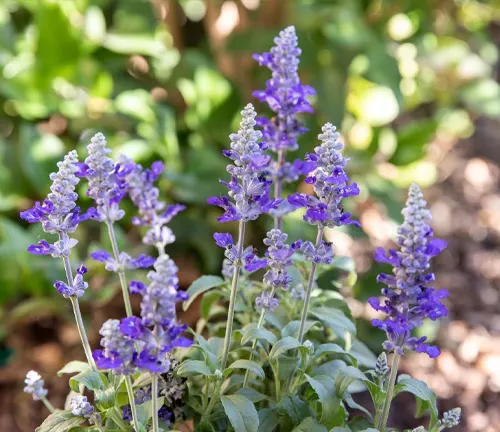
One of the most well-known varieties is common sage (Salvia officinalis), widely used in cooking for its earthy and slightly peppery flavor. In addition to its culinary importance, salvia plants have been cherished for their therapeutic properties. Various species, such as Salvia divinorum, have been traditionally used by indigenous cultures in spiritual and shamanic rituals for their mind-altering effects.
Salvia plants are also celebrated for their vibrant, tubular flowers that range in color from brilliant blues and purples to fiery reds. Whether you’re a chef seeking to enhance your dishes or a gardener looking to add color and fragrance to your landscape, salvia is a captivating and multifaceted plant with a global presence and a wealth of cultural significance.
| Characteristics | Description |
| Scientific Name | Salvia |
| Family | Lamiaceae (Mint family) |
| Number of Species | Over 900 species |
| Common Varieties | Salvia officinalis (Common sage), Salvia divinorum (Diviner’s sage), and many more |
| Culinary Use | Common sage (Salvia officinalis) is widely used in cooking for its aromatic leaves, adding an earthy and slightly peppery flavor to dishes. |
| Medicinal Use | Various species of Salvia have been used for their medicinal properties, including relief from digestive issues and sore throats. |
| Cultural Significance | Salvia has been traditionally used in spiritual and shamanic rituals, with species like Salvia divinorum known for their psychoactive effects. |
| Flowers | Salvia plants produce vibrant, tubular flowers in a variety of colors, including blue, purple, and red. |
| Distribution | Salvia species are found all around the world, with different varieties adapted to various climates. |
| Growth Habit | Most Salvia plants are herbaceous perennials, but some can be annuals or shrubs. |
| Foliage | The leaves of Salvia plants are typically opposite, simple, and often aromatic. |
| Height | Depending on the species, Salvia plants can range from a few inches to several feet in height. |
| Water Requirements | Salvia plants generally prefer well-drained soil and are drought-tolerant once established. |
| Sunlight | Most varieties thrive in full sun, although some can tolerate partial shade. |
| Soil Type | Salvia prefers soil with good drainage and a slightly alkaline pH. |
| Wildlife Attraction | Salvia is known to attract pollinators like bees and butterflies, making it a popular choice for pollinator gardens. |
| Cultivation | Propagation can be done through seeds or cuttings, and Salvia plants are relatively easy to grow in gardens or containers. |
| Pruning | Regular pruning of spent flowers can encourage continuous blooming. |
| Hardiness Zones | The hardiness of Salvia plants varies by species, but many are suitable for a wide range of USDA hardiness zones. |
| Maintenance | Salvia plants are generally low-maintenance and can be an excellent addition to both gardens and landscapes. |
Botanical Beauty of “Salvia Plant”
Salvia, commonly known as sage, is a botanical gem that has captured the hearts of gardeners and nature enthusiasts around the world. With over 900 species in the Salvia genus, this diverse and vibrant plant family offers a stunning display of botanical beauty. From the ornate tubular flowers that range in colors from fiery reds to calming blues, to the aromatic leaves that carry a unique fragrance, Salvia plants stand as a testament to the wonders of the natural world. In this article, we’ll explore the various facets of Salvia, from its woodland elegance to its ecological importance.
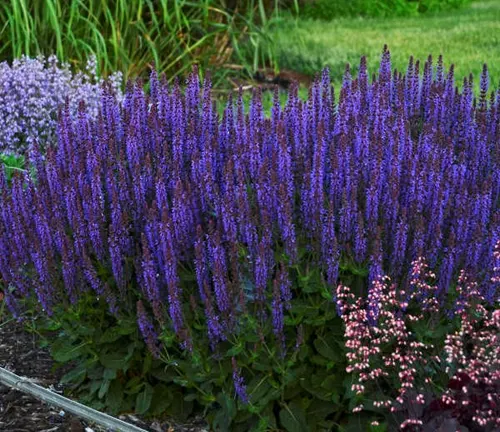
Woodland Elegance
One of the most enchanting aspects of the Salvia plant is its woodland elegance. Many Salvia species are known for their slender stems adorned with delicate, tubular flowers. These blooms gracefully sway in the breeze, evoking a sense of tranquility in any garden or natural setting. Whether it’s the electric blue of Salvia patens or the scarlet allure of Salvia splendens, the woodland elegance of Salvia plants adds a touch of magic to outdoor spaces.
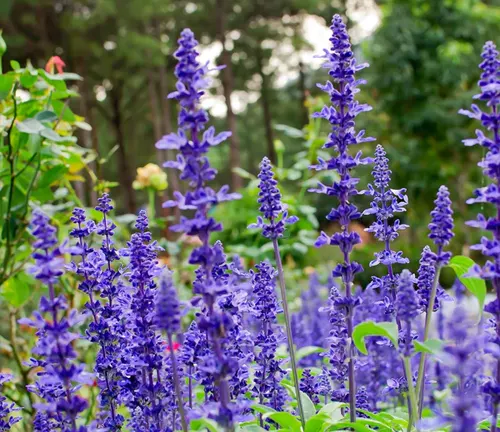
Ecological Importance
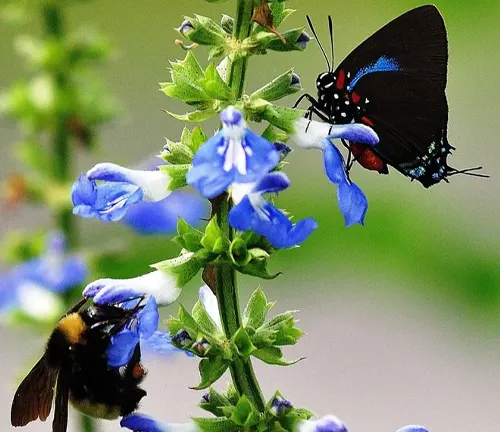

Salvia plants play a significant role in supporting biodiversity. Their nectar-rich flowers attract a variety of pollinators, including bees, butterflies, and hummingbirds. These interactions make Salvia an essential part of many ecosystems, contributing to the health and balance of natural habitats. As pollinators visit Salvia blooms, they aid in the reproduction of other plant species, demonstrating the intricate web of ecological importance that Salvia participates in.
Cultivation and Conservation
Cultivating Salvia plants is a rewarding endeavor for gardeners. Many species are hardy and adaptable to various climates, making them a versatile addition to gardens and landscapes. However, as with many native plants, some Salvia species are vulnerable due to habitat loss. Conservation efforts are crucial to protect these unique plants and their natural habitats. Gardeners and conservationists alike are joining hands to ensure the survival of Salvia species for generations to come.
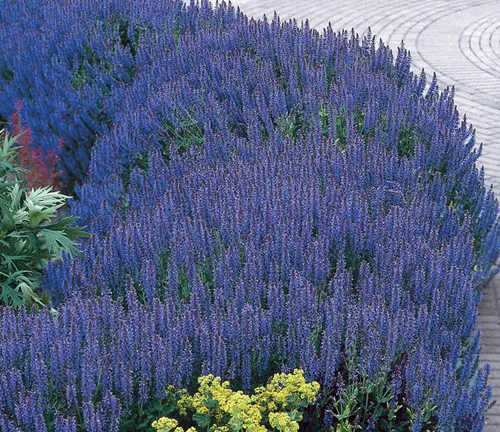
Fragrance
The fragrance of Salvia is another captivating feature. The leaves of many Salvia species emit an aromatic scent, making them not only visually appealing but also appealing to the olfactory senses. This fragrance can range from earthy and herbal to sweet and spicy, depending on the specific variety. For centuries, the aroma of sage has been associated with cleansing and purifying rituals in various cultures.
Soil Stabilization
Beyond its beauty and fragrance, Salvia plants also contribute to soil stabilization. The robust root systems of many Salvia species help prevent soil erosion, making them valuable in areas prone to landslides or erosion. This aspect of Salvia’s utility showcases its ability to serve both aesthetic and environmental purposes.
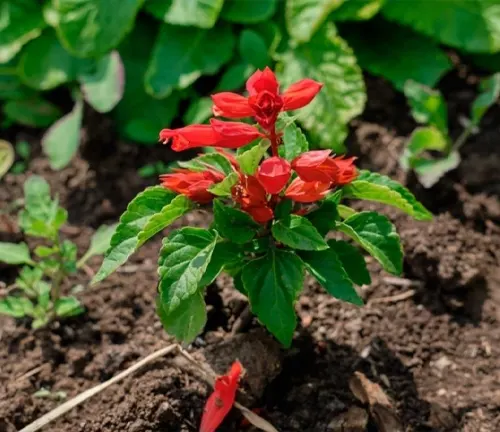
Common Uses
Salvia is a versatile plant with a wide range of uses. In the culinary world, common sage (Salvia officinalis) is a staple herb, adding flavor and aroma to dishes. In traditional medicine, Salvia species have been employed for their medicinal properties, providing relief from ailments such as digestive issues and sore throats. Additionally, the psychoactive properties of Salvia divinorum have made it a focus of shamanic rituals and spiritual exploration.
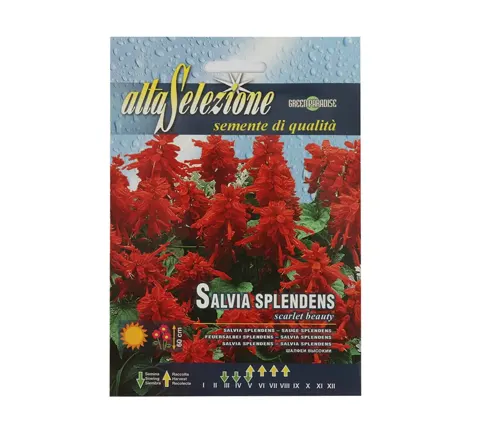
Benefits
The benefits of Salvia plants are manifold. They enhance the beauty of gardens, support ecosystems through pollinator attraction, stabilize soil, and offer a range of culinary and medicinal uses. Whether you’re an avid gardener, nature lover, or someone intrigued by the diverse uses of plants, Salvia stands as a remarkable example of the botanical world’s beauty and significance. Its rich history and the multi-faceted role it plays in our lives make it a truly exceptional plant.
Different Species
Salvia officinalis (Common Sage)
This is one of the most well-known and widely used culinary herbs. Common sage has gray-green leaves and a distinct earthy flavor. It’s used to season a variety of dishes.
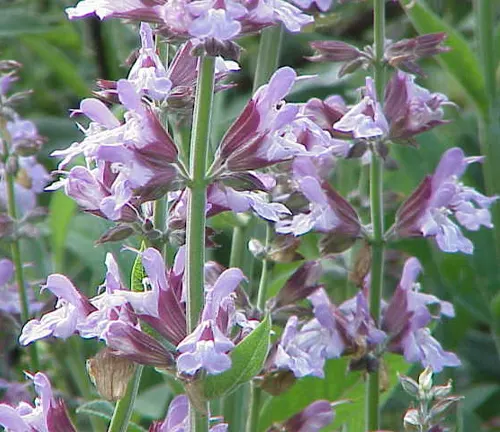
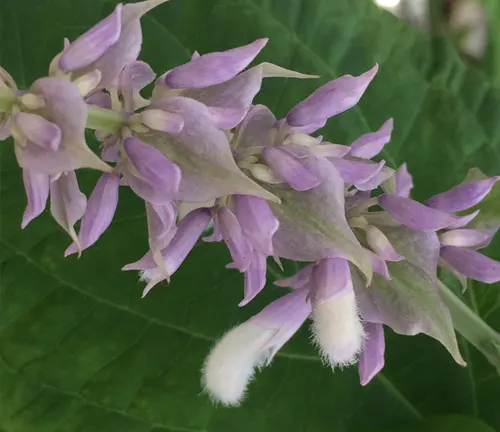
Salvia divinorum (Diviner’s Sage)
Known for its psychoactive properties, Salvia divinorum is used in shamanic and spiritual rituals. It has large, green, and ovate leaves.
Salvia nemorosa
(Woodland Sage)
Woodland sage is a popular ornamental plant with spikes of violet-blue flowers. It’s often grown in gardens for its attractive blooms.
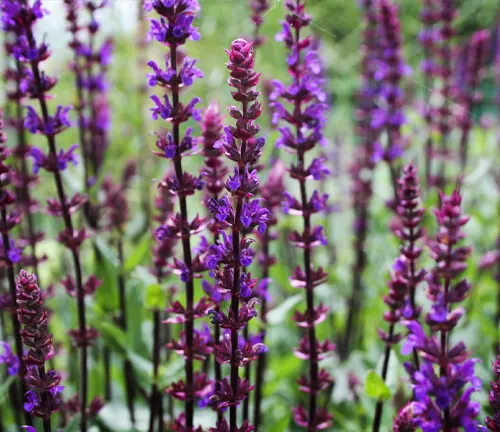
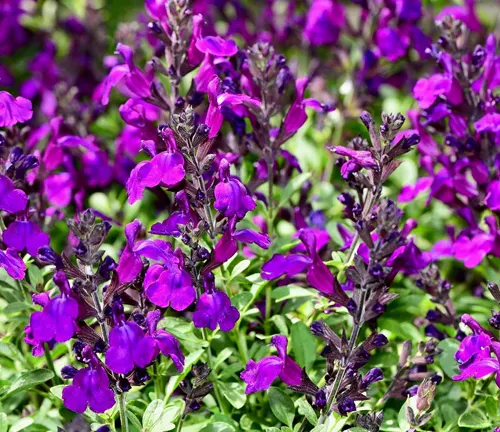
Salvia greggii
(Autumn Sage)
This species is prized for its long-lasting, tubular flowers that come in various colors, including red, pink, and purple. It’s a favorite among hummingbirds and gardeners alike.
Salvia microphylla
(Baby Sage)
Baby sage is a compact, low-growing variety with small, aromatic leaves and vibrant flowers. It’s suitable for small gardens and containers.
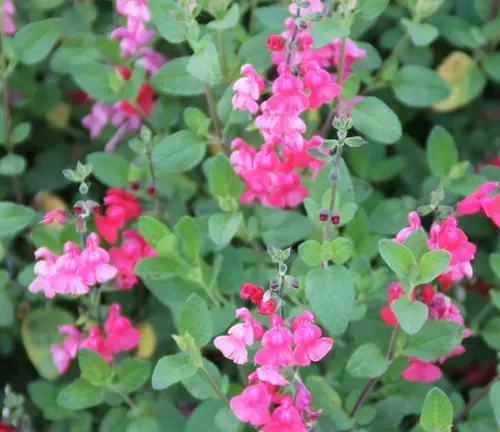
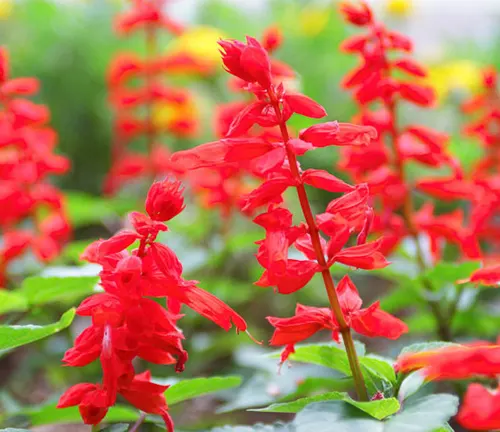
Salvia coccinea
(Scarlet Sage)
This North American native species boasts bright scarlet-red flowers and attracts hummingbirds and butterflies. It’s often used in wildflower gardens.
Salvia leucantha
(Mexican Bush Sage)
This species has striking white or purple flowers and velvety leaves. It’s a popular choice for adding texture and color to gardens.

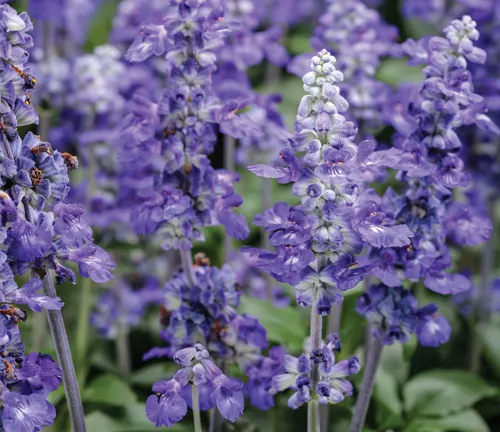
Salvia farinacea
(Mealy Cup Sage)
Mealy cup sage features spikes of blue or purple flowers and is a favorite for its long-lasting blooms and drought tolerance.
Salvia splendens
(Scarlet Sage or Tropical Sage)
This annual or tender perennial produces vibrant red flowers and is often grown as a bedding plant or in containers.
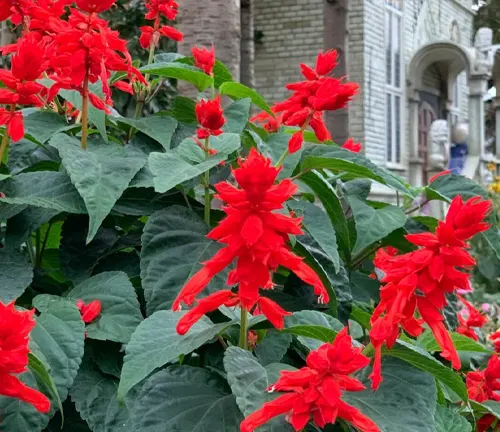

Salvia elegans
(Pineapple Sage)
Pineapple sage is prized for its pineapple-scented leaves and brilliant red tubular flowers. It’s a favorite among herbal tea enthusiasts.
Frequently Asked Questions (FAQs)
- What is Salvia?
Salvia is a genus of plants in the mint family (Lamiaceae) that includes over 900 different species. It is commonly known as sage and is valued for its culinary, medicinal, and ornamental uses. - How do I care for Salvia plants in my garden?
Salvia plants generally prefer well-drained soil and full sun, but some varieties can tolerate partial shade. Water them moderately, and make sure they receive good air circulation to prevent disease. Prune spent flowers to encourage continuous blooming. - Can I grow Salvia from seeds?
Yes, many Salvia species can be grown from seeds. However, some varieties may also be propagated from cuttings. Check the specific requirements for the Salvia species you want to grow. - What are the culinary uses of Salvia?
Common sage (Salvia officinalis) is the most commonly used Salvia species in cooking. Its aromatic leaves are used to flavor a wide range of dishes, particularly in Mediterranean and Thanksgiving recipes. - Are all Salvia species safe for consumption?
While many Salvia species are safe for culinary use, not all Salvia plants are suitable for consumption. Some species may have toxic properties or undesirable flavors, so it’s essential to use the appropriate Salvia species in cooking. - What are the medicinal uses of Salvia plants?
Some Salvia species have been used in traditional medicine for various purposes, such as relieving digestive issues and sore throats. However, the effectiveness and safety of these uses can vary by species, so it’s important to consult with a healthcare professional. - Are there any psychoactive species of Salvia?
Yes, Salvia divinorum is a psychoactive species of Salvia known for its hallucinogenic effects when smoked or consumed. It has been used in shamanic and spiritual practices, and it’s important to exercise caution and respect local regulations when dealing with it. - Do Salvia plants attract pollinators?
Yes, many Salvia species are known for their nectar-rich flowers, which attract pollinators like bees, butterflies, and hummingbirds. They play a vital role in supporting local ecosystems and biodiversity. - Are Salvia plants suitable for xeriscaping or drought-tolerant gardens?
Some Salvia species are well-suited for xeriscaping and drought-tolerant gardens because they can thrive with minimal water once established. Salvia plants with gray or fuzzy leaves are often excellent choices for such environments. - Can I grow Salvia plants in containers?
Yes, many Salvia species can be grown in containers, making them suitable for balconies, patios, or small gardens. Use well-draining soil and ensure the containers receive adequate sunlight and water.



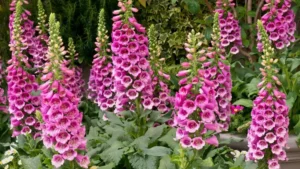
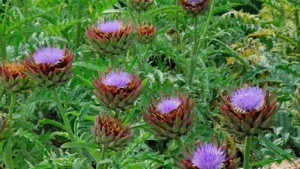
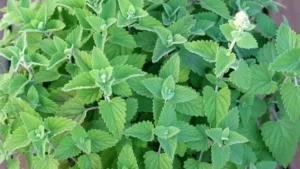


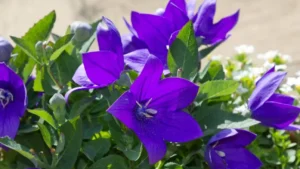
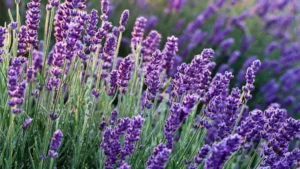
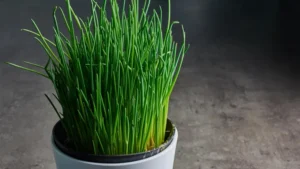

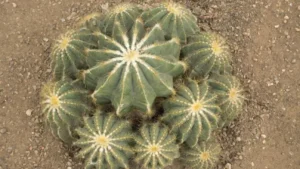

Leave your comment